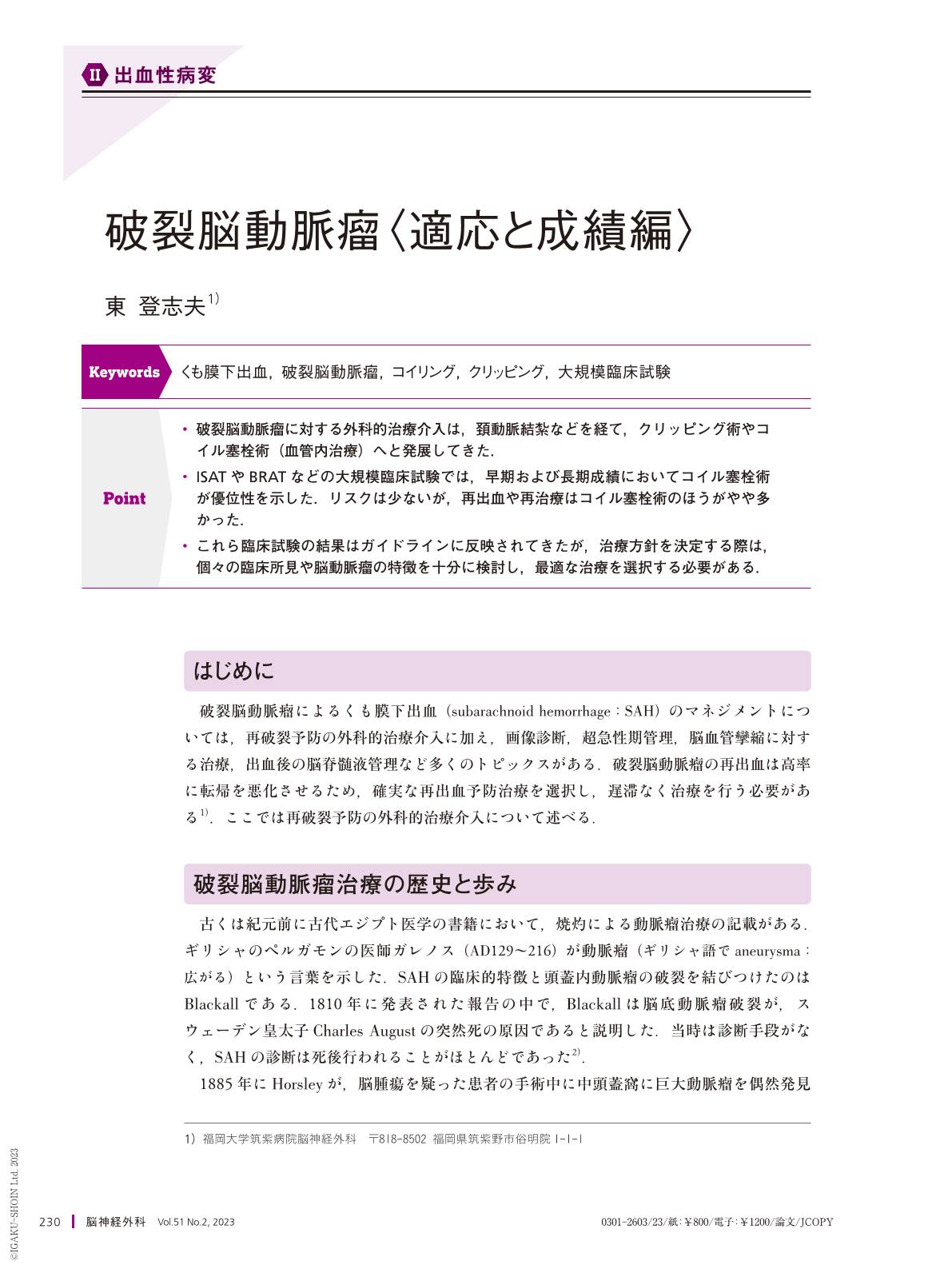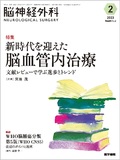Japanese
English
- 有料閲覧
- Abstract 文献概要
- 1ページ目 Look Inside
- 参考文献 Reference
Point
・破裂脳動脈瘤に対する外科的治療介入は,頚動脈結紮などを経て,クリッピング術やコイル塞栓術(血管内治療)へと発展してきた.
・ISATやBRATなどの大規模臨床試験では,早期および長期成績においてコイル塞栓術が優位性を示した.リスクは少ないが,再出血や再治療はコイル塞栓術のほうがやや多かった.
・これら臨床試験の結果はガイドラインに反映されてきたが,治療方針を決定する際は,個々の臨床所見や脳動脈瘤の特徴を十分に検討し,最適な治療を選択する必要がある.
Selection of a reliable method to offer prompt treatment and prevent rebleeding of ruptured cerebral aneurysms is necessary because rebleeding can worsen patient outcomes. Surgical interventions for ruptured cerebral aneurysms have evolved from cervical artery ligation to clipping using a surgical microscope and endovascular coil embolization. In the International Subarachnoid Aneurysm Trial, a multicenter randomized controlled trial, the incidence of poor outcomes at 1 year after treatment was 23.7% and 30.6% in the endovascular coiling and neurosurgical clipping groups, respectively, which demonstrated the superiority of endovascular coiling over neurosurgical clipping(p = 0.0019)in patients with ruptured intracranial aneurysms. Rates of survival and independence in activities of daily living at 10 years after treatment were higher in the coiling group than in the clipping group(odds ratio: 1.34; 95% confidence interval: 1.07-1.67). The Barrow Ruptured Aneurysm Trial and several meta-analyses yielded similar results, showing the superiority of endovascular coiling over neurosurgical clipping with respect to short- and long-term clinical outcomes in patients. These results have also been reflected in the guidelines. Large clinical trials have analyzed and compared the effects of these treatments. In addition, the subsequent decade has witnessed remarkable advances in medical devices and treatment techniques for cerebral aneurysms. Clinical findings and cerebral aneurysm characteristics should be carefully evaluated to select the optimal treatment strategy for patients with ruptured cerebral aneurysms.

Copyright © 2023, Igaku-Shoin Ltd. All rights reserved.


